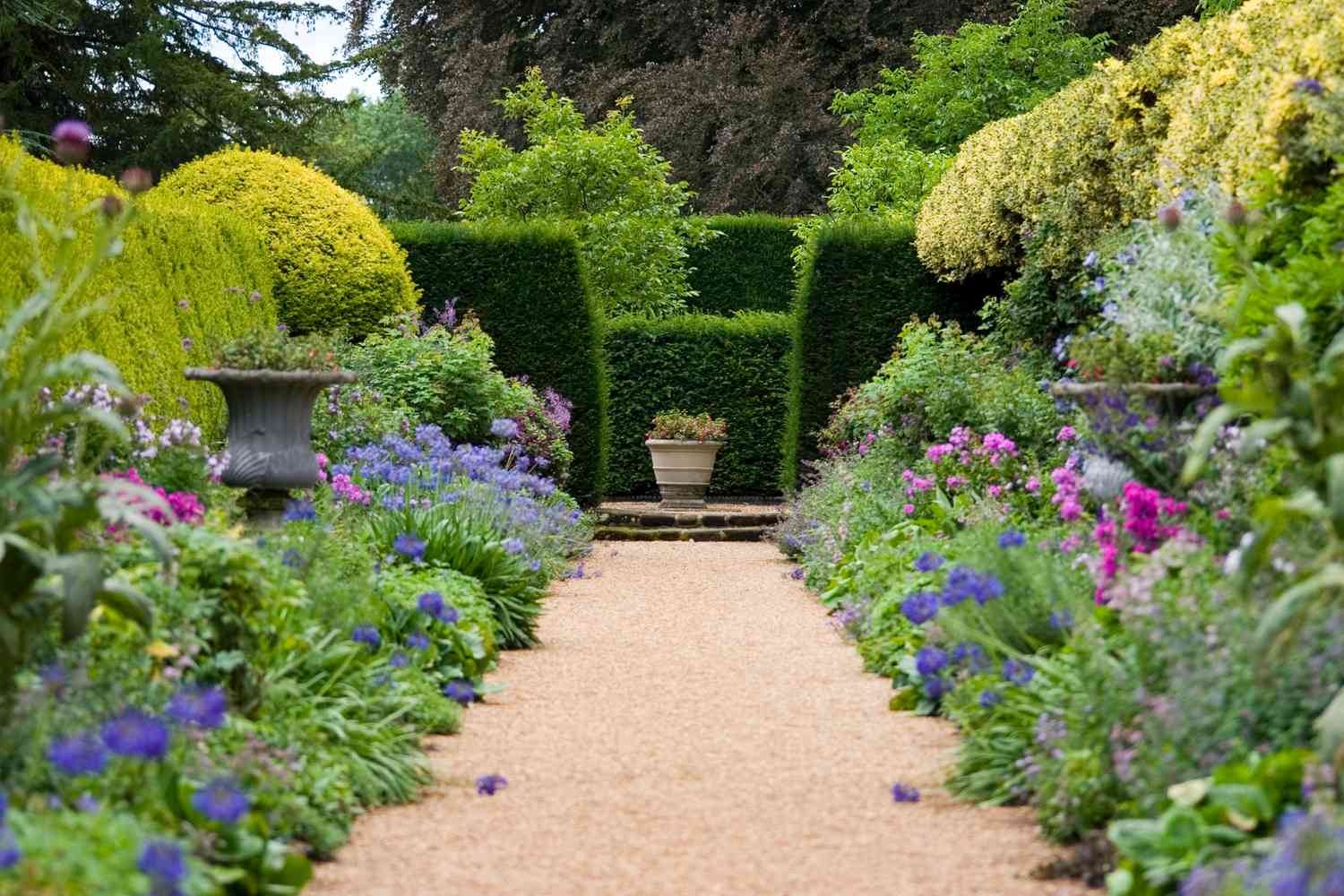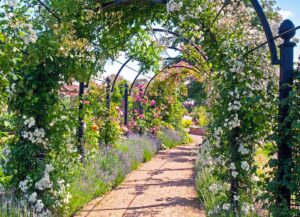Transform Your Outdoor Space with Timeless English Garden Ideas
In the world of landscape design, few styles evoke the sense of romance, harmony, and established elegance quite like the English garden. With its perfect balance of formal structure and seemingly effortless natural beauty, the English garden tradition offers a wealth of inspiration for today’s homeowners seeking to create outdoor spaces that feel both sophisticated and welcoming.
The Enduring Appeal of English Garden Design
The English garden style has evolved over centuries, blending influences from formal European designs with a distinctly British appreciation for the beauty of controlled wilderness. What makes these gardens so universally appealing is their ability to feel simultaneously planned and spontaneous—where geometric hedges might frame billowing masses of roses, or where a formal pond reflects clouds drifting over a carefully composed landscape.
“The English garden is truly a dialog between order and chaos,” explains garden historian Dr. Emma Harrington. “It’s this conversation between human intervention and natural processes that creates such dynamic, living spaces that change dramatically with the seasons while maintaining their essential character.”
Essential Elements of Traditional English Garden Style
The traditional English garden style encompasses several distinctive approaches, from the formal gardens of the Tudor era to the picturesque landscapes of Capability Brown and the exuberant mixed borders popularized by Gertrude Jekyll. Despite their differences, several key elements unite these traditions:
Structural Framework
At the heart of every successful English garden lies a strong architectural framework that provides year-round interest and visual organization. This structure typically includes:
- Hedges and topiary: Yew, boxwood, and privet create living walls, geometric shapes, and defined garden rooms
- Stone or brick walls: Traditional boundaries that offer both protection and beautiful backdrops for plantings
- Formal paths: Gravel, flagstone, or brick pathways that guide movement through the space
- Focal points: Sundials, statuary, obelisks, or fountains that draw the eye and anchor the design
This framework establishes the garden’s “bones,” ensuring visual interest even in winter when deciduous plants are dormant.
Abundant, Layered Plantings
Within this structured framework, English gardens are characterized by lush, abundant plantings arranged in a deliberate yet seemingly natural manner:
- Mixed borders: Deep planting beds combining shrubs, perennials, annuals, and bulbs
- Cottage garden favorites: Roses, delphiniums, foxgloves, hollyhocks, and lavender
- Climbing plants: Wisteria, climbing roses, and clematis softening walls and structures
- Herbaceous perennials: Peonies, phlox, iris, and asters providing reliable seasonal color
- Seasonal bulbs: Daffodils, tulips, and alliums offering spring impact
The signature English border creates a tapestry effect through careful consideration of plant height, texture, form, and bloom time, ensuring visual interest throughout the growing season.
Balance of Formal and Informal Elements
What truly distinguishes the English garden approach is its masterful balance between formal and informal elements:
- Formal near the house: More structured, geometric designs close to the residence
- Increasingly natural further out: Gardens becoming progressively more naturalistic with distance
- Borrowed scenery: Framed views of the surrounding landscape incorporated into the design
- Controlled views: Strategic placement of elements to reveal and conceal, creating a sense of discovery
This balance creates gardens that feel both designed and discovered, offering a unique sense of place that evolves as one moves through the space.
Elegant English Garden Designs for Modern Homes
While traditional English gardens often occupied sprawling estates, contemporary adaptations successfully translate these principles to modern properties of all sizes:
The Modern Country Garden
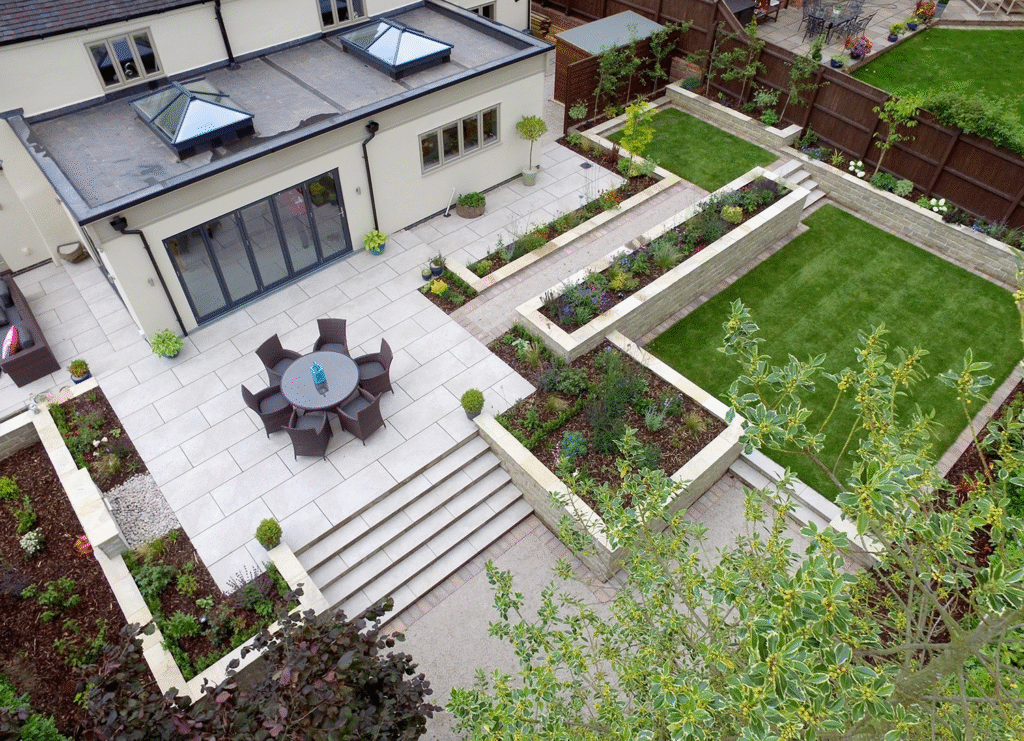
For suburban properties with moderate space, the country garden approach balances formal elements with the relaxed feeling of a rural setting:
- Central lawn area functioning as an outdoor room
- Perimeter mixed borders filled with traditional and modern plant varieties
- Arbors, pergolas, or arches creating vertical interest and framing views
- Gravel paths connecting different garden areas
- Small fruit trees or a kitchen garden incorporated into the design
This approach works particularly well for properties where the house itself has traditional architectural elements that can be complemented by the landscape design.
The Formal Town Garden
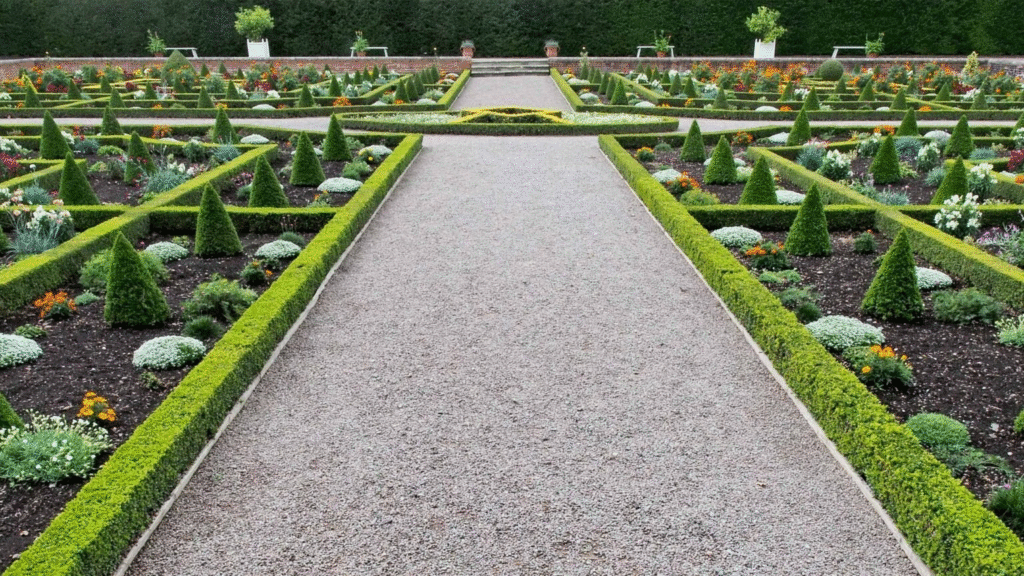
For urban properties with limited space, a more formal English garden approach often proves most successful:
- Symmetrical layout with a central axis
- Precisely clipped hedges defining spaces
- Potted specimens adding height and seasonal interest
- Limited plant palette used in repetition for cohesion
- Water feature as a central focal point
“In smaller spaces, the discipline of formal design actually creates a sense of expansiveness,” notes landscape architect James Barrington. “The clean lines and careful proportions make the garden feel larger and more established, even when newly installed.”
The Woodland Retreat
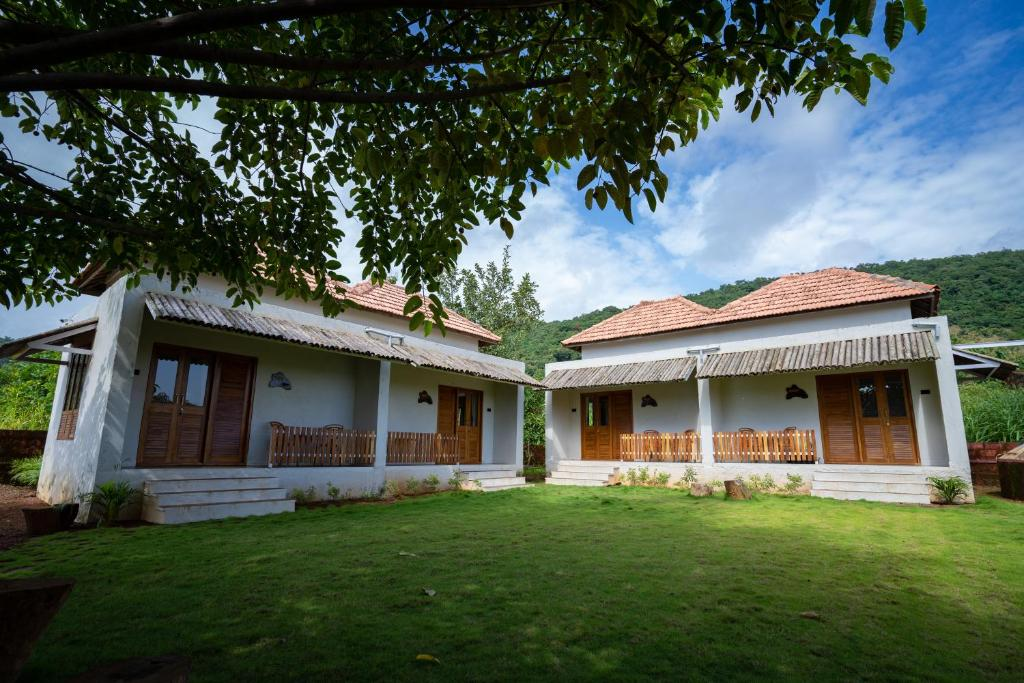
For properties blessed with mature trees or shaded conditions, the woodland garden tradition offers a naturalistic approach to English garden design:
- Meandering paths through dappled shade
- Emphasis on foliage texture and form
- Spring-flowering bulbs and woodland perennials
- Native ferns and shade-tolerant shrubs
- Rustic seating areas for contemplation
This style embraces seasonal changes dramatically, from the spectacular spring displays to the subtle beauty of winter bark and evergreen structure.
Small English Garden Patio Ideas
The English garden aesthetic translates beautifully to even the smallest outdoor spaces, including patios, courtyards, and balconies:
Container Gardens with English Character
- Use weathered terracotta pots and traditional materials
- Create mini herb gardens with boxwood edging
- Plant climbing roses or clematis on walls and trellises
- Arrange pots in graduated heights for layered effect
- Include fragrant plants near seating areas
Courtyard Transformations
Small enclosed spaces can become enchanting English-inspired retreats through careful design:
- Central water feature as a focal point
- Espaliered fruit trees against walls
- Vertical gardens utilizing climbing plants
- Strategically placed mirrors to expand the sense of space
- Overhead pergolas supporting vines for dappled shade
“The intimacy of a small courtyard garden actually enhances many English garden qualities,” explains garden designer Charlotte Wilson. “The enclosed nature creates a secret garden feeling that’s quintessentially English, while the confined space forces a discipline in plant selection that often results in extraordinary beauty.”
Balcony Gardens with English Flair
Even apartment dwellers can create mini English gardens through thoughtful container gardening:
- Window boxes with trailing ivy, herbs, and seasonal flowers
- Tall containers with dwarf trees or topiary for structure
- Hanging baskets with trailing plants creating vertical interest
- Climbing roses trained on balcony railings
- Fragrant herbs and flowers placed near seating areas
English Garden Layouts and Designs
While English gardens appear effortlessly beautiful, successful designs rely on careful planning and thoughtful layouts:
The Four-Square Garden

One of the most adaptable English garden layouts is the four-square design, which divides the space into quadrants around a central feature:
- Central focal point (fountain, statue, or specimen tree)
- Symmetrical beds with identical or complementary plantings
- Intersecting paths creating the quadrants
- Hedges or borders defining the perimeter
- Gates or arches marking entrances to the garden
This versatile layout can be scaled up for grand estates or down for modest town gardens, making it one of the most widely used approaches in English garden design.
The Garden Room Concept
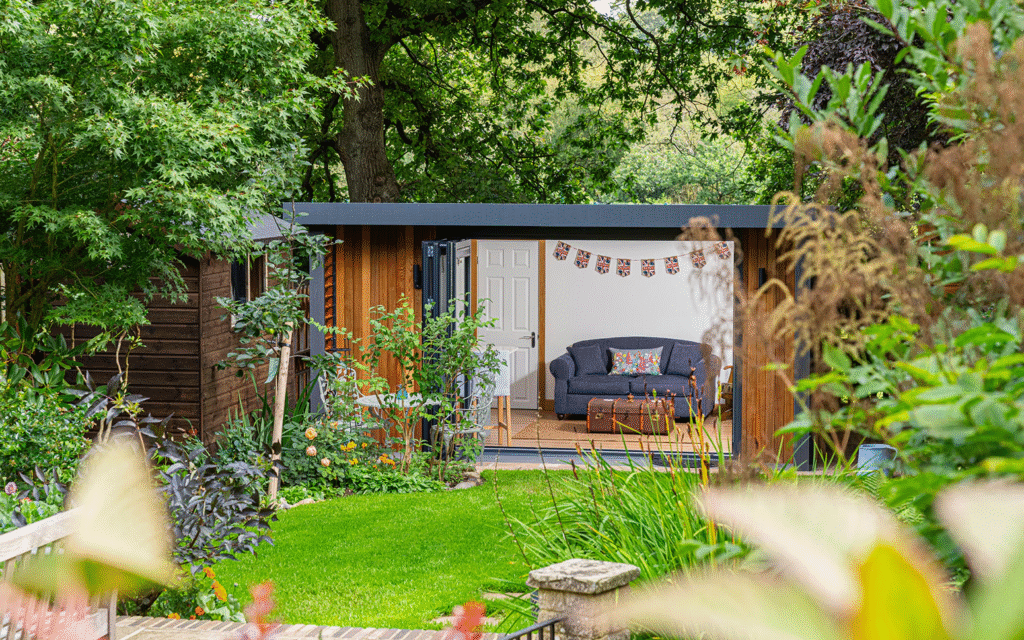
Another quintessentially English approach is the creation of a series of “garden rooms,” each with its own character:
- Hedges, walls, or structures dividing the garden into distinct spaces
- Each room having a different theme, color scheme, or purpose
- Transitions between rooms through gates, arches, or openings
- Surprise elements revealed as visitors move through the space
- Consistency in materials and some planting elements tying the whole together
This approach works particularly well for properties with challenging topography, as different levels can become naturally defined rooms with their own character.
The Cottage Garden Layout
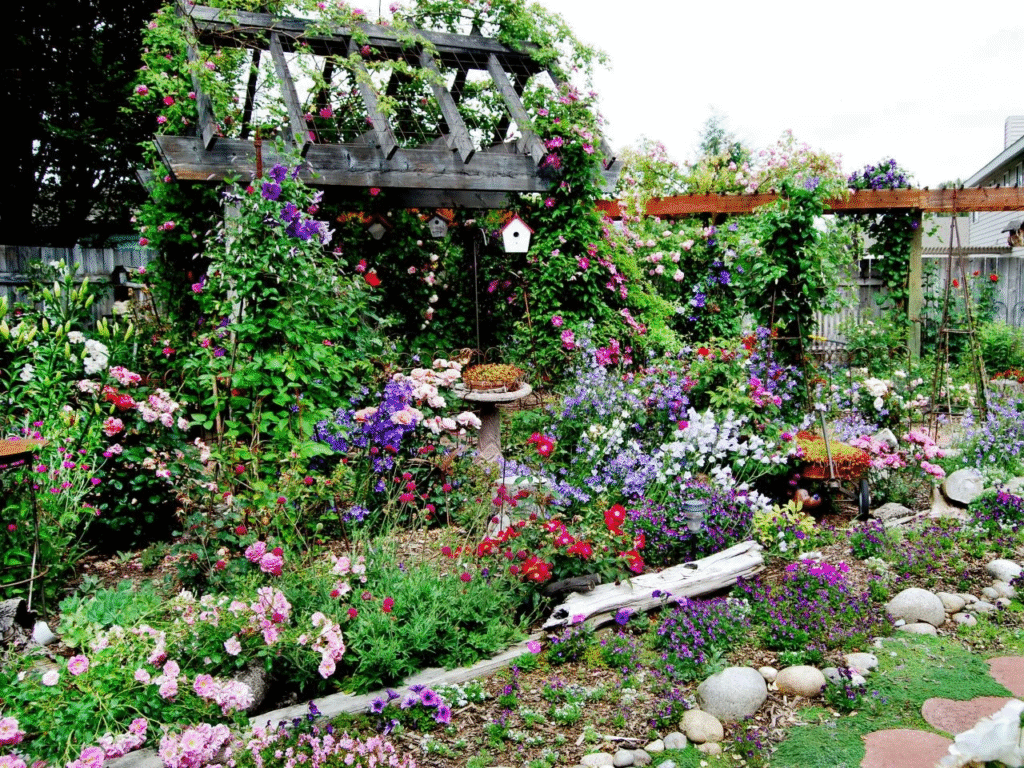
For a more relaxed interpretation of English garden style, the cottage garden layout offers charming informality:
- Curving beds surrounding a simple lawn area
- Dense, abundant plantings in seemingly random arrangements
- Picket fence or informal hedging as boundary
- Narrow, winding paths through lush plantings
- Practical elements like herb gardens and fruit trees incorporated
This approach emphasizes plant diversity and seasonal change over strict geometry, though successful designs still maintain a sense of order within the apparent chaos.
Creating Your Own English Garden: Practical Considerations
While English gardens exude timeless charm, creating and maintaining these landscapes requires practical consideration of several factors:
Climate Adaptation
The traditional English garden evolved in Britain’s mild, moist climate. Adapting these designs to different regions requires thoughtful plant selection:
- For hot, dry regions: Focus on drought-tolerant varieties with similar forms and textures
- For cold winter areas: Select hardy species that provide similar structural elements
- For tropical zones: Emphasize the formal structural elements with regionally appropriate plants
“The essence of English garden style isn’t about specific plants, but about relationships between plants and spaces,” notes horticulturist Dr. Michael Thompson. “By understanding these relationships, we can create gardens with English character using entirely different plant palettes suitable for our local conditions.”
Maintenance Realities
The romantic vision of an English garden must be balanced with practical maintenance considerations:
- Formal hedges require regular trimming
- Mixed borders need seasonal attention and division
- Gravel paths demand periodic weeding and refreshing
- Lawns benefit from consistent care
- Water features require monitoring and cleaning
When planning your English-inspired garden, be realistic about the maintenance requirements and design accordingly. Even modest gardens can capture the English aesthetic when properly scaled to available maintenance time and resources.
Sustainable Adaptations
Today’s English garden designs increasingly incorporate sustainable practices that honor the tradition while meeting contemporary environmental concerns:
- Rain gardens capturing runoff in naturalistic plantings
- Native plants providing ecological benefits while maintaining English garden forms
- Reduced lawn areas minimizing water and chemical use
- Organic management practices supporting biodiversity
- Composting and soil building improving garden health naturally
These sustainable approaches often enhance the garden’s beauty while reducing long-term maintenance requirements.
Embracing the English Garden Spirit
Perhaps the most important aspect of creating a successful English garden is embracing the philosophical approach behind these timeless designs. English gardens at their best represent a loving collaboration between human intention and natural processes—a conversation between gardener and landscape that evolves over time.
The true English garden is never static or “finished” but constantly evolving, with each season bringing new delights and challenges. This ongoing relationship with the garden space is perhaps the most rewarding aspect of the English garden tradition.
As garden writer Beverly Nichols famously noted, “The making of a garden is not a matter of following rules—it is an adventure in living.” By embracing this spirit of thoughtful creativity, today’s gardeners can create their own interpretations of the English garden tradition that honor its rich history while meeting contemporary needs and conditions.
Whether you’re working with acres of land or a modest patio, the principles of English garden design offer a time-tested approach to creating outdoor spaces that delight the senses, nurture the spirit, and improve with age. By understanding and adapting these principles to your own site and circumstances, you can create a garden that feels both timeless and personal—a living legacy that will bring joy for generations to come.
